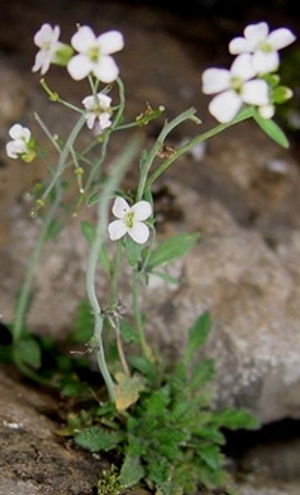 Photo: Outi Savolainen, Univ. of
Oulu, Finland
Photo: Outi Savolainen, Univ. of
Oulu, Finland
Arabidopsis lyrata is a member of the mustard family of flowering plants, and is in the same genus as the widely used, and perhaps the best understood model plant Arabidopsis thaliana. A. thaliana was the first plant species from which a complete genome sequence of a single individual was obtained. The value of studying A. lyrata derives both from its close relation to A. thaliana, and from its unique biological properties. A. lyrata and A. thaliana are close enough that ancestral states of polymorphisms in A. thaliana can be directly inferred from comparisons with A. lyrata, which will greatly advance our understanding of mutation and selection in plants. Furthermore, A. lyrata genomes are about 50% larger than A. thaliana genomes, and their comparison affords an important opportunity to discover how a plant can gain or lose a third or its genome in just five million years
On the other hand, A. lyrata is an outcrossing diploid and, unlike A. thaliana, has stable and spatially restricted populations or subspecies. Thus, comparisons between A. lyrata and A. thaliana may reveal genetic changes associated with the invasive spread of A. thaliana. Because A. lyrata is a very close relative of A. halleri, with which it is interfertile, much of the genome information for A. lyrata can be directly transferred to A. halleri, a heavy metal accumulating species and an important model of studying phytoremediation.